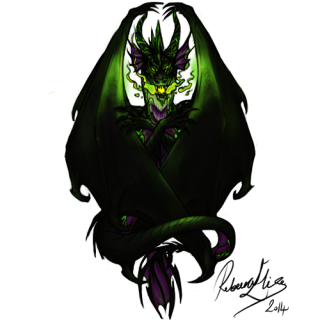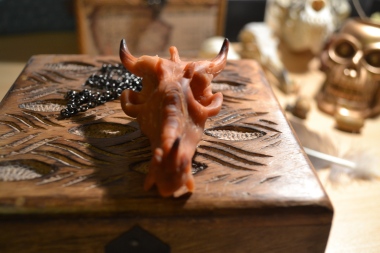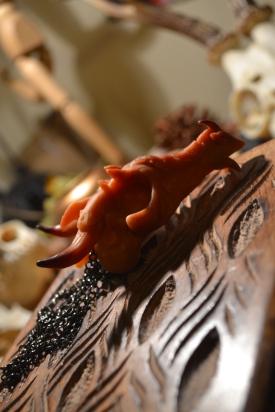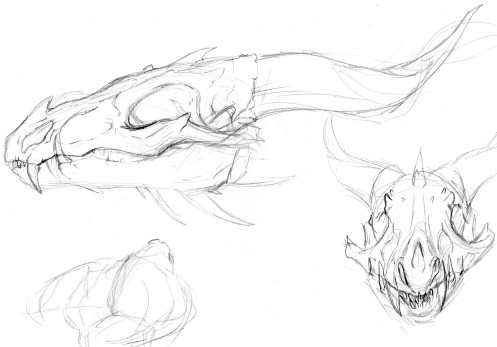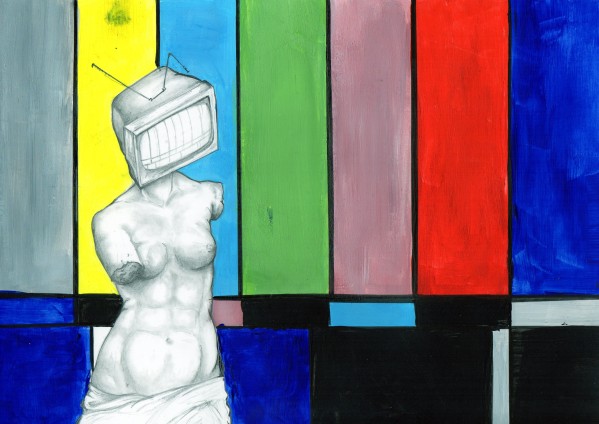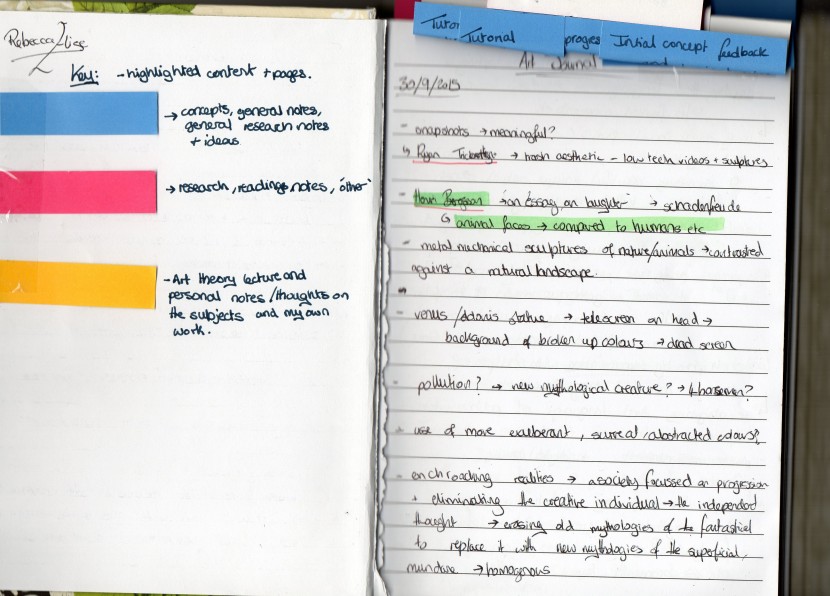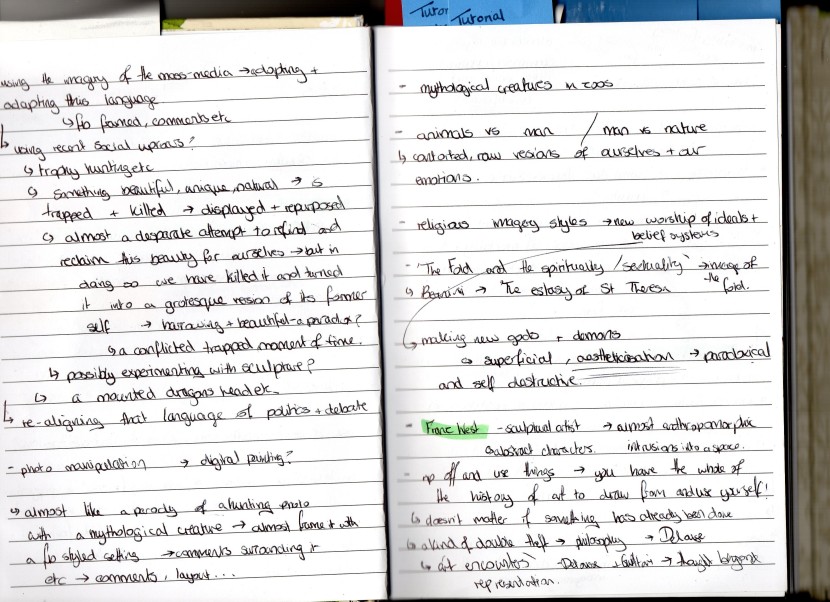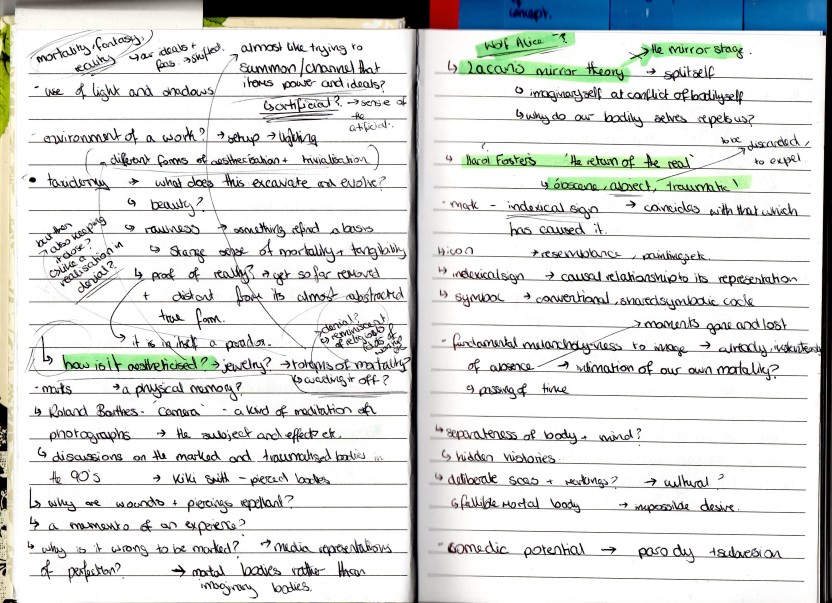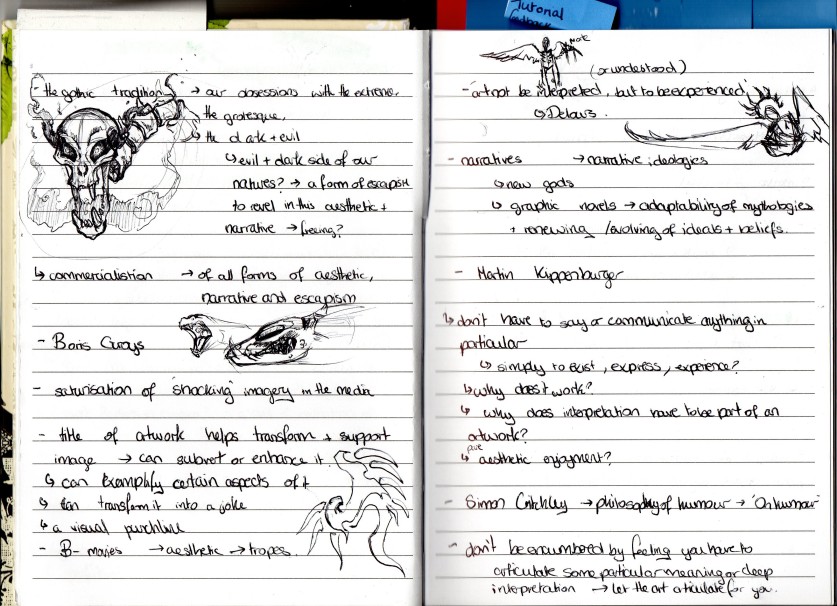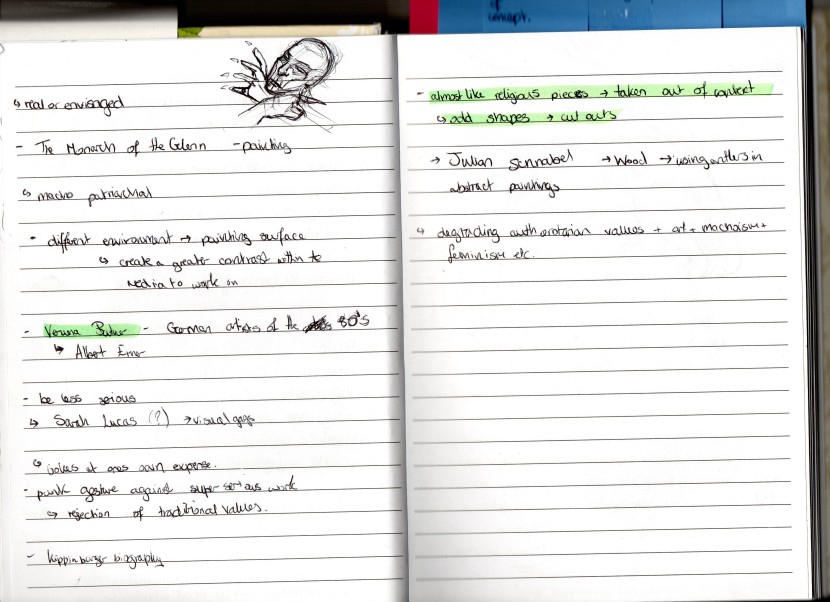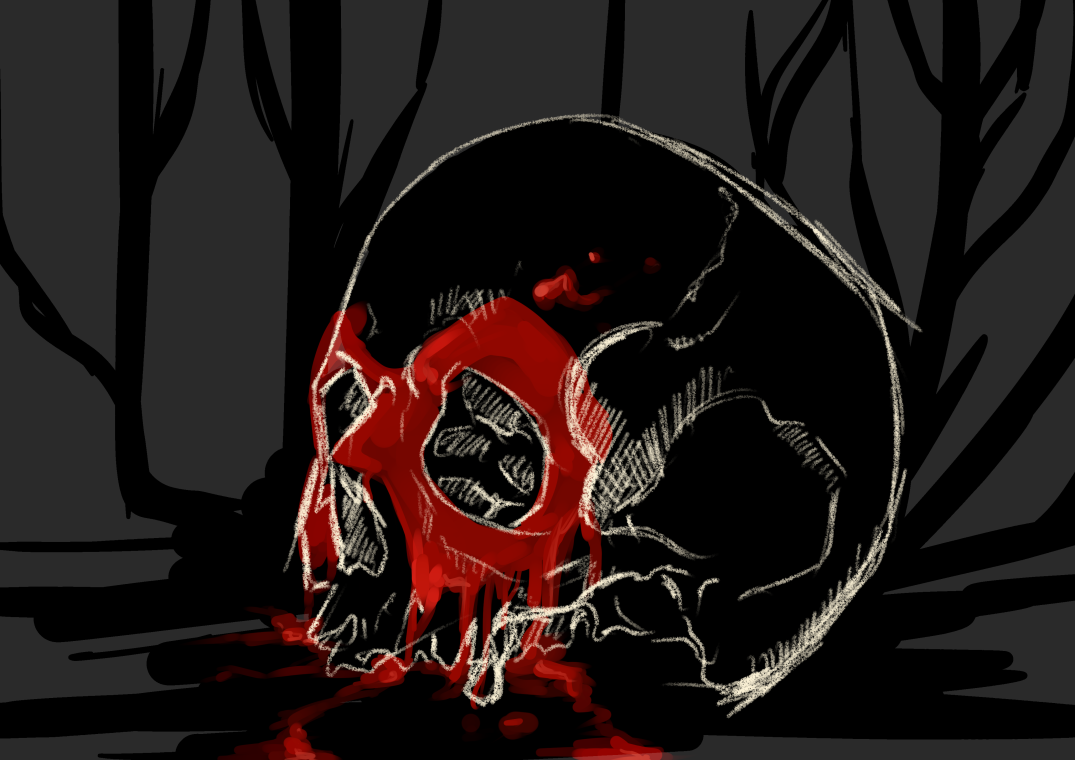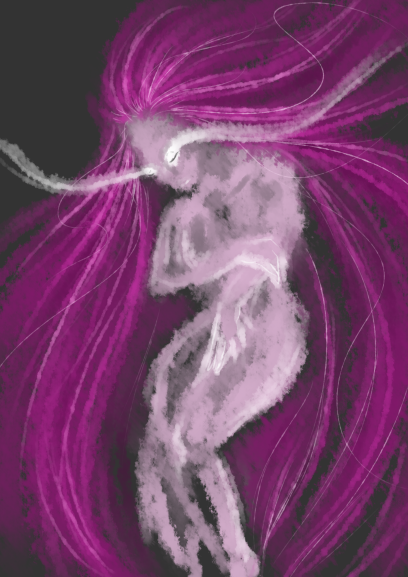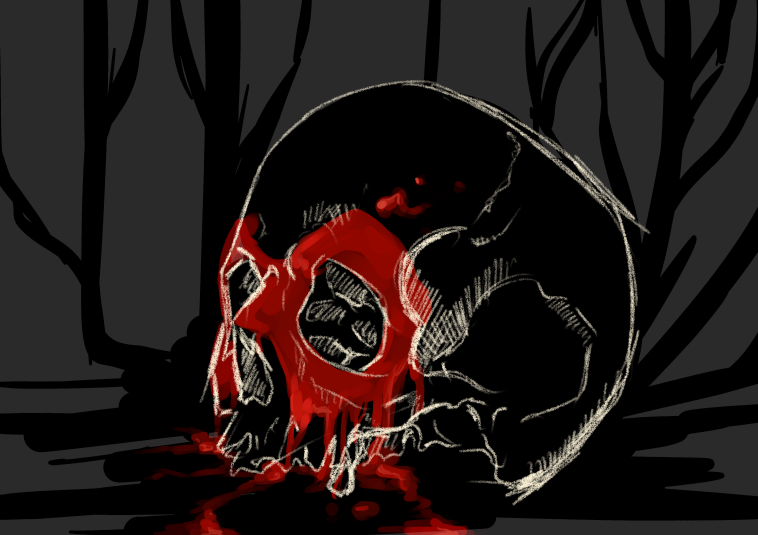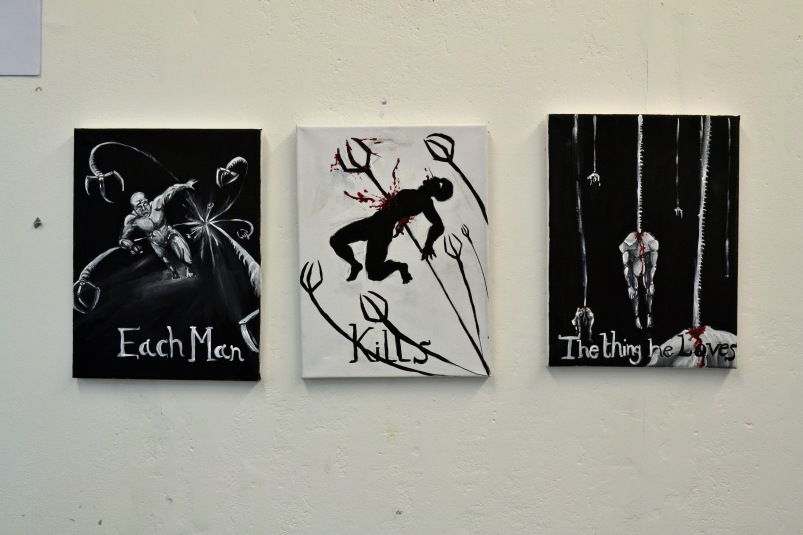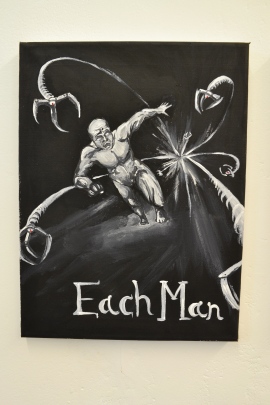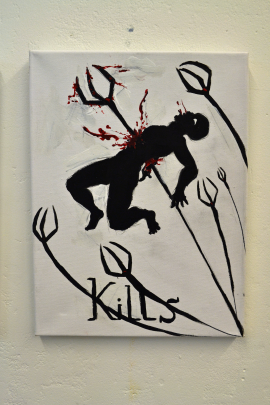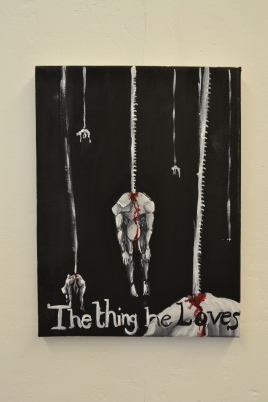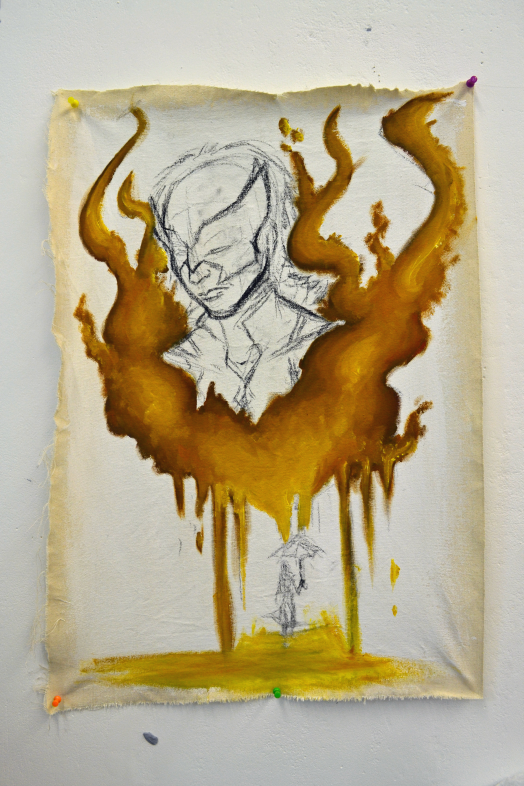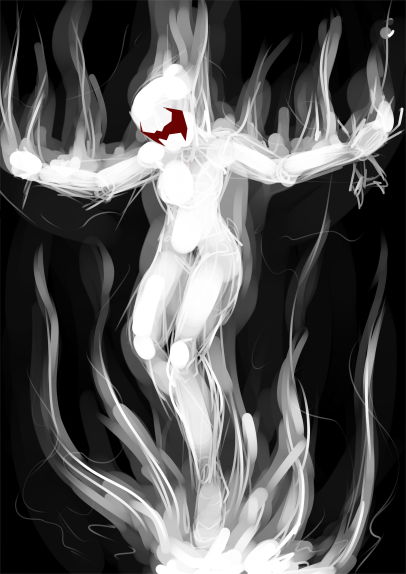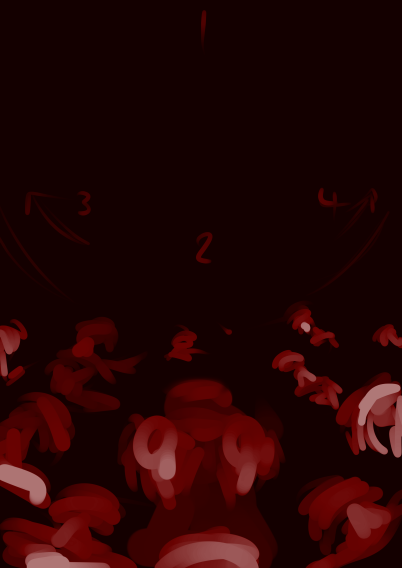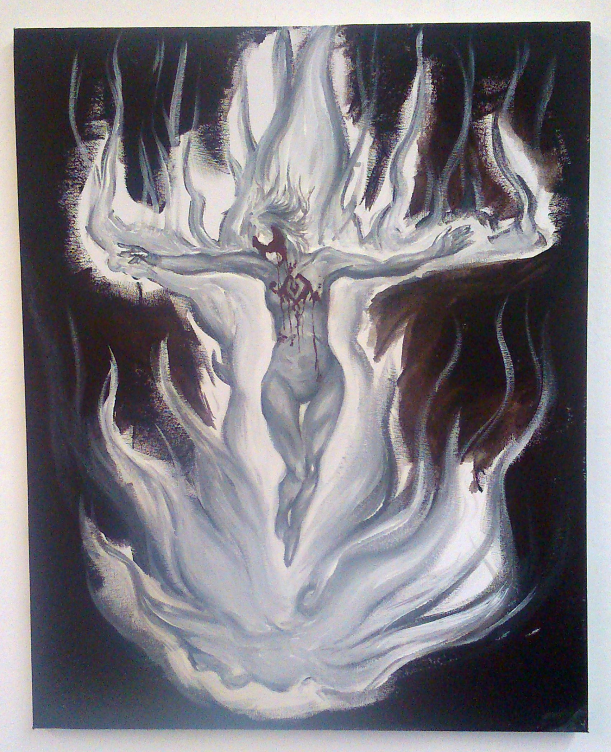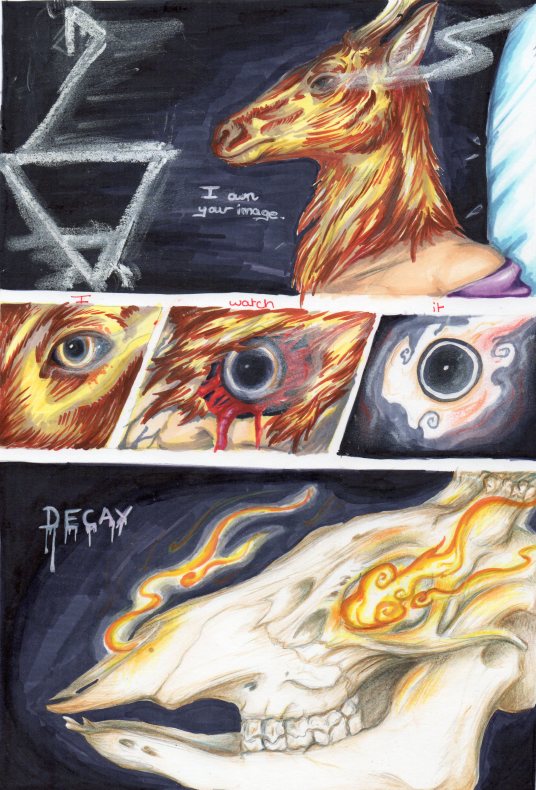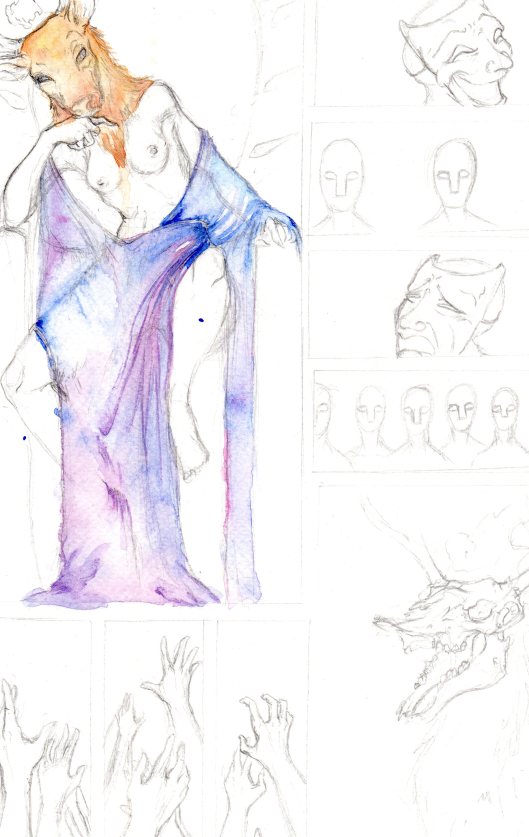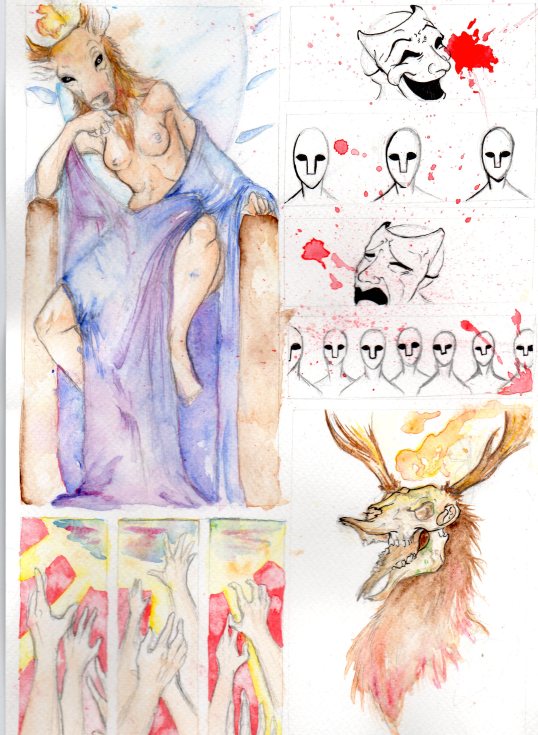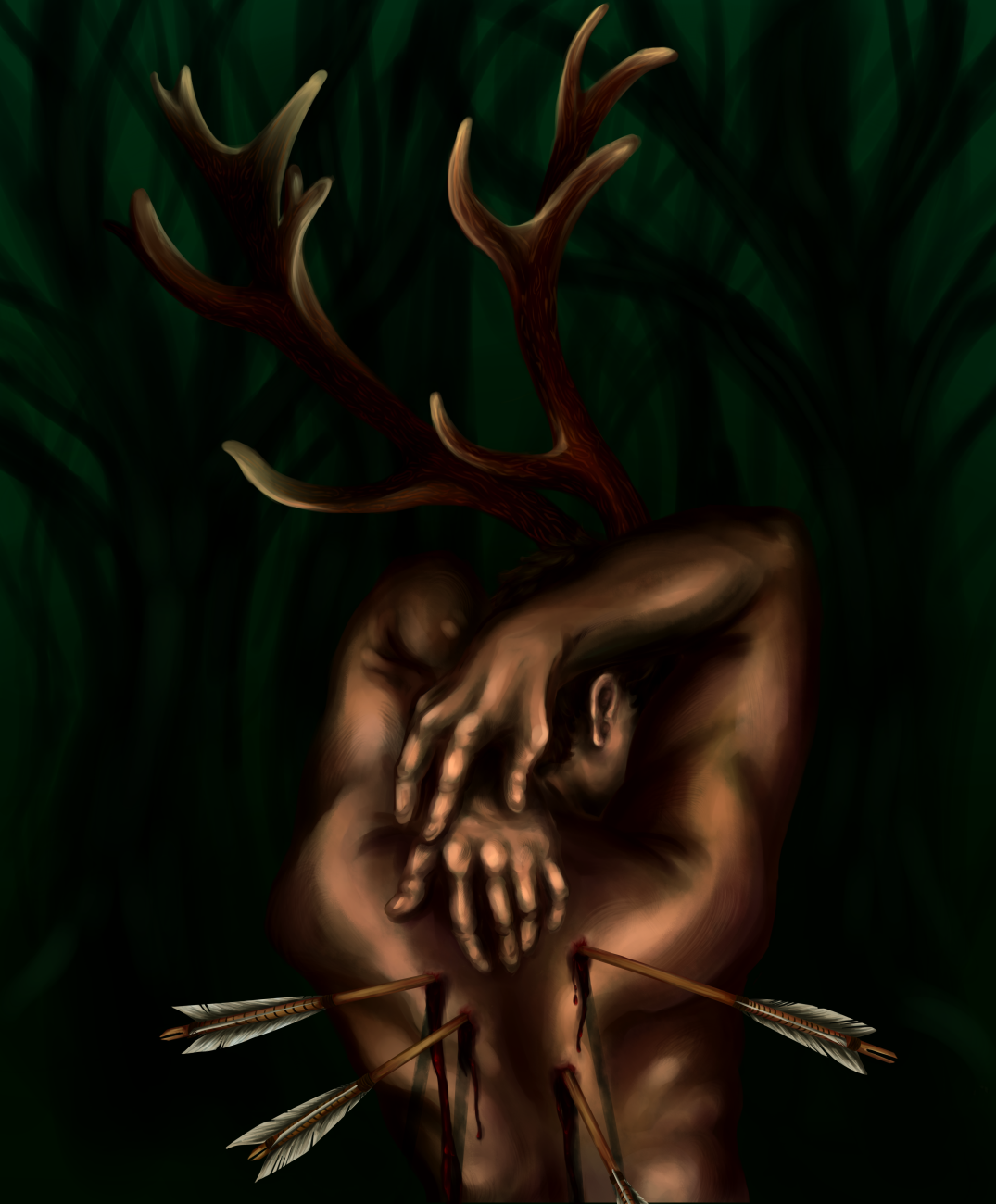
False Prophet
Digital painting
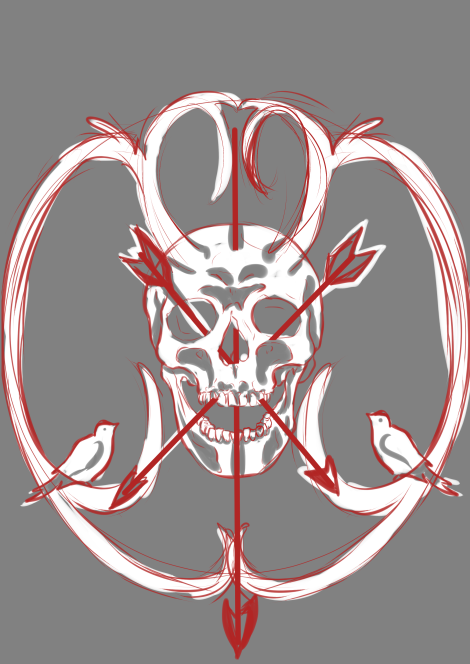
Digital concept sketch of potential stencil design.
Pan : stencil series (printed stencils on the left, actual stencils on the right)
Series of stencils experimenting with designs and imagery from my third final story focusing on the self-destructive, hyperbolic image of masculinity that men are forced to adhere to through transforming elements and symbols from the Greek mythology of Pan.
I wanted to create an emblematic and somewhat Gothic, sinister image to emblazon the front of my book/zine with in a style similar to old tomes of stories whilst trying to encompass some of the imagery I had in mind for the Pan narrative, but needed focusing and expanding on in writing.
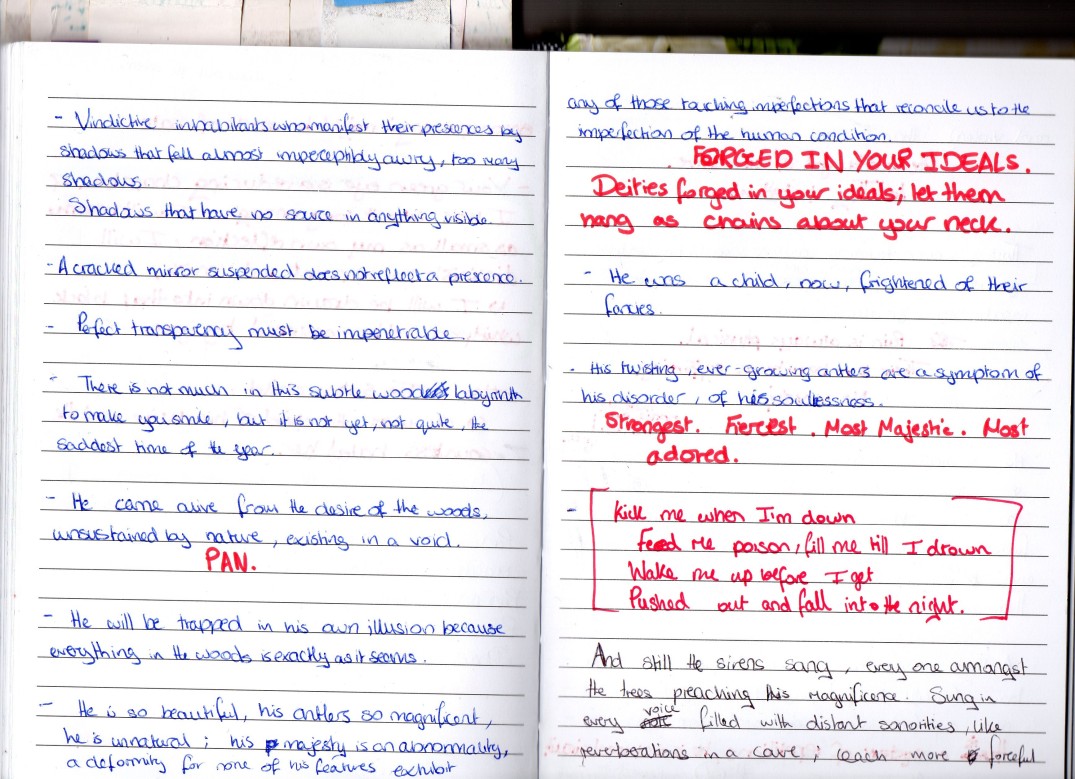
1
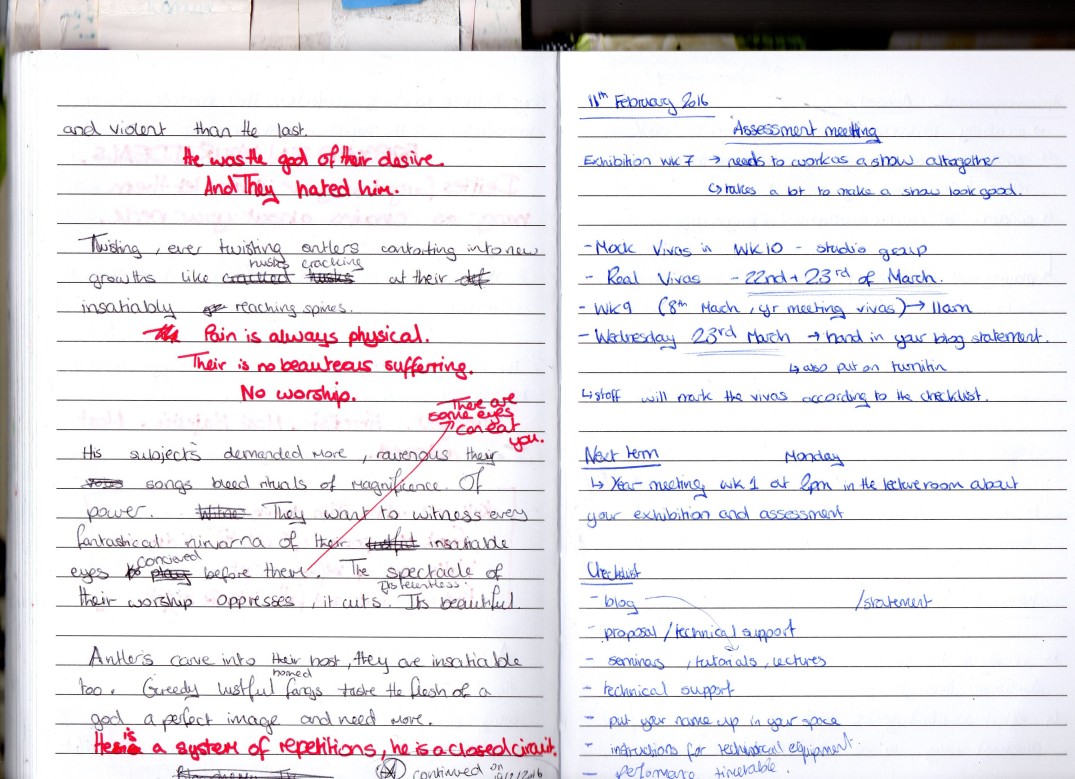
1
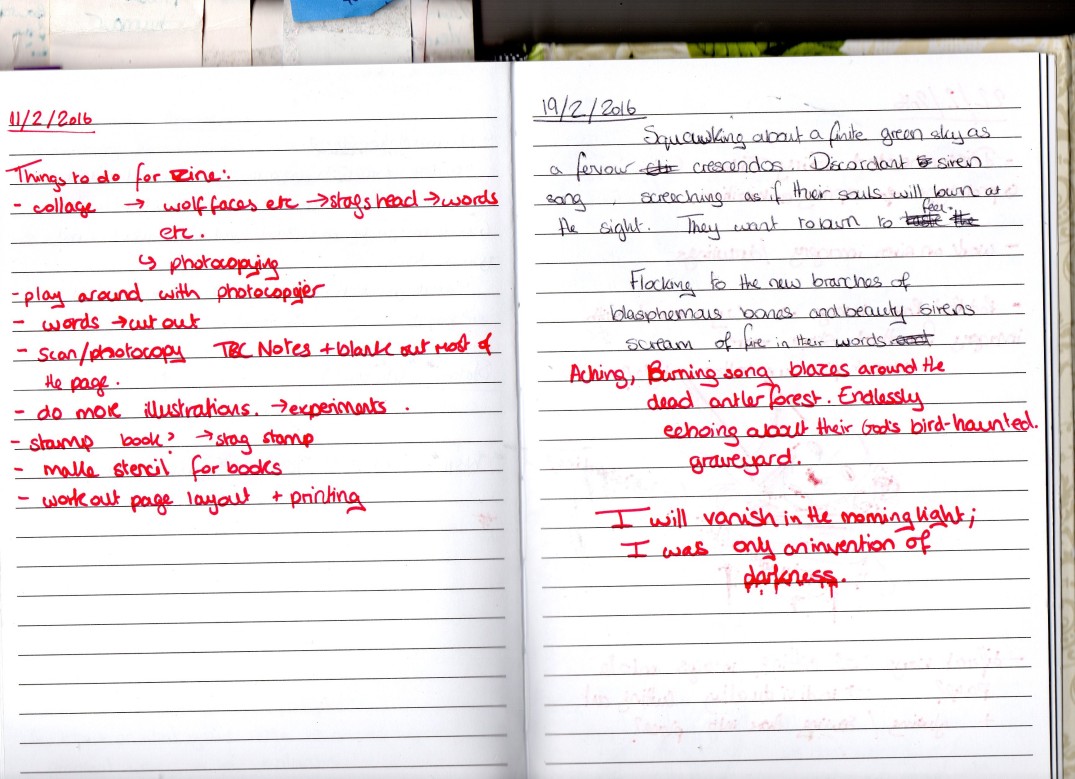
3
First draft of my expanded writing and narrative developed from my Sorrow of Songbirds painting and concepts. I found it most difficult to construct this story as it had been loosest in its original visual narrative even though it incorporated very distinct and powerful symbolic imagery, such as the collective mass of the siren songbirds and the overbearing weight of Pan’s ever-growing antler’s in an attempt prove and emblazon his masculinity and of course the metaphorical allusions to the figure of the god Pan himself, with its sexual prowess and predatory historical narratives being turned on their head, and so I found myself helped greatly again by the language and fairy tale narratives of Angela Carter from her short story The Erl King. This then also allowed me to intensify the focus and language of the imagery in the illustrations that were to go alongside it, predominantly in the digital painting that I experimented with, and found the hunting imagery from Pan’s predatory sexual conquests and also linking with the deer iconography of the antlers and other mythological stories such as those of Diana and Artemis the huntress, both empowered and potentially destructive female figures through their own or others agency.
I felt it was important to examine both make and female representations, as all gender is constructed and manipulated and I wanted to try and explore how these forced hegemonic ideals form a dialogue which perpetuates and entraps people within these ideologies, becoming mere performance of their set labels. To what extent are men complicit in the damaging views and social restrictions and expectations of women and vice versa? And how can a healing and reconciling dialogue be opened up between them without the interference of constant social and cultural narratives which seek to encompass everything and draw them into the whirling oblivion of the impossible and unreal ideals of a society saturated with indoctrinating images and stories.
